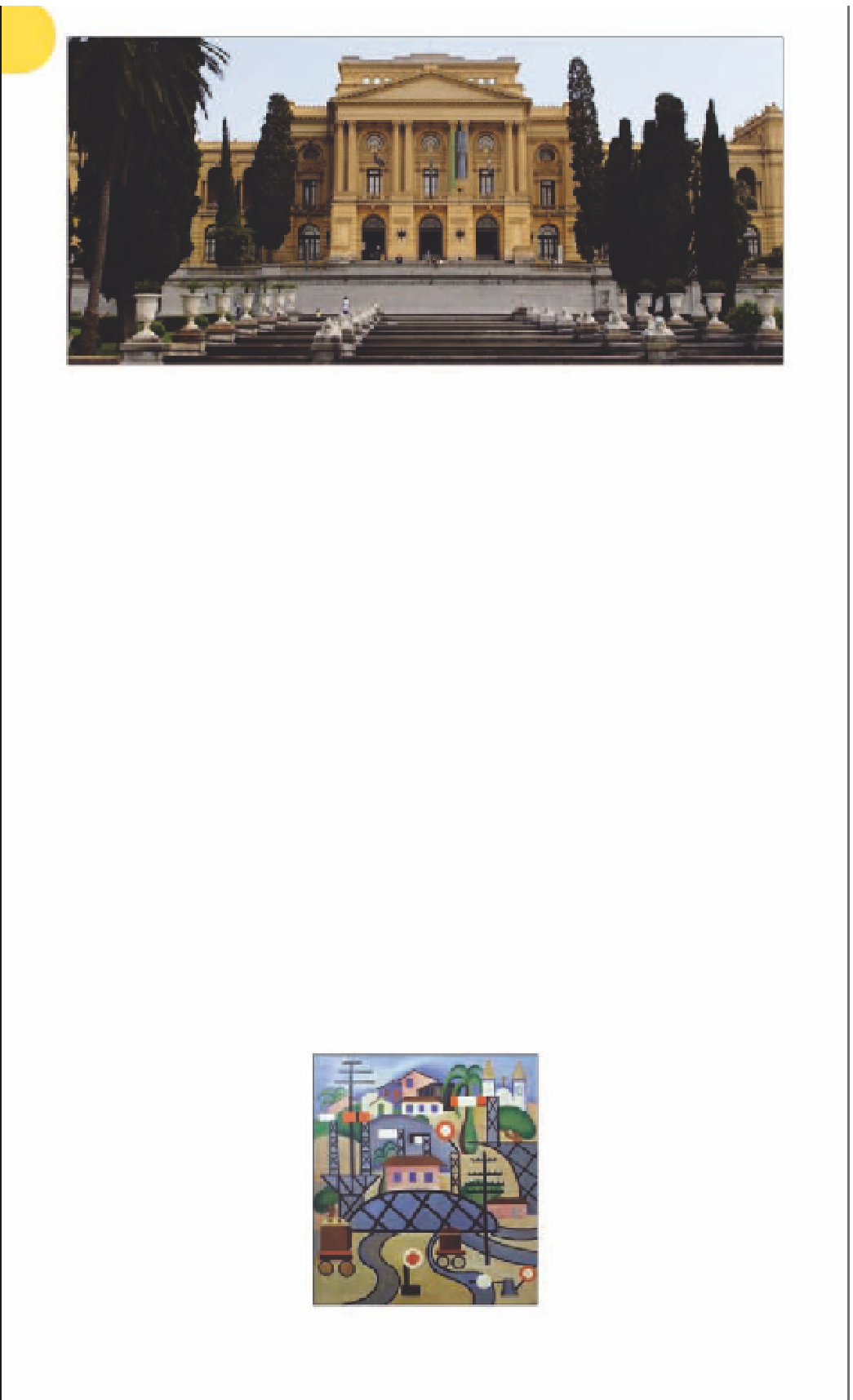Travel Reference
In-Depth Information
Façade of the imposing Museu Paulista do Ipiranga in the Parque de Independência, Ipiranga
Museu Paulista
do Ipiranga
o
Parque da Independência s/n,
Ipiranga.
Tel
(011) 2065 8000.
@
#
9am-5pm Tue-Sun.
&
^
www
.mp.usp.br
chapel at the base of the
monument, a tomb contains
the remains of Dom Pedro I
and Empress Leopoldina. Also
in the grounds is the
Casa do
Grito
, a replica of the simple
adobe house depicted by
Pedro Américo in his painting.
The collection comprises
some 8,000 works of art.
Prominent among these
are important, little-seen
European works by Amadeo
Modigliani, Pablo Picasso,
Max Ernst, and Henri Matisse,
which sit alongside the cream
of Brazil's artists. Brazilian
Modernists, such as Anita
Malfatti, Vitor Brecheret, and
Candido Portanari, are well
represented. MAC also holds
three of the most celebrated
works by Tarsila do Amaral -
A Negra
,
Estrada de Ferro
Central do Brasil
, and
A
Floresta
. Tarsila was the
founder of
antropofagismo
(see pp30-31)
- a movement
which paved the way for
many important artistic trends
within post-War Brazil.
In 1822, Dom Pedro I
declared the famous “Grito
de Ipiranga,” or call for inde-
pendence from Portugal
(Independência ou Morte, or
Independence or Death), on
the banks of the Rio Ipiranga
(see p52)
. This large palace,
built in 1890, was one of
the earliest monuments of
independent Brazil.
The Museu Paulista is
housed in the palace at
the top of extensive formal
gardens in the Parque da
Independência. The museum
is devoted to the nation's
history, containing a collec-
tion of exhibits which inc-
ludes old maps, traditional
colonial furniture, carriages,
rare documents, old coins,
clothing, and paintings. The
artist Pedro Américo's monu-
mental canvas
Independência
ou Morte
(1888), depicting
the young prince shouting
his
grito
(cry), sits in the
building's most handsome
room, the Salão Nobre.
The mock French
Renaissance gardens are
dotted with sculptures and
monuments. These include an
an enormous bronze
sculpture to the nation's
independence,
Monumento
a Independência
, made by
the Italian sculptor Ettore
Ximenes in 1921. In the
Museu de Arte
Contemporânea
p
Rua da Reitora 160, Cidade
Universitária.
Tel
(011) 3091 3538.
@
#
10am-6pm Mon-Fri,
10am-4pm Sat & Sun.
8
by
appointment.
7
^
www
.
macvirtual.usp.br/mac/
A treasure trove of modern
and post-modern European
and Brazilian art lies tucked
away in the campus of São
Paulo's most distinguished
university. The collection
at the Museu de Arte
Contemporânea (MAC) is an
amalgamation of donations
given by wealthy individuals
since the early 20th century
and prizes from São Paulo's
Art Biennials.
Instituto Butantã
a
Av Vital Brazil 1500, Cidade
Universitária.
Tel
(011) 3726 7222.
@
#
9am-4:30pm daily.
&
8
by appointment.
www
.
butantan.gov.br
The Instituto Butantã is
a biomedical research
center affiliated to the
Cidade Universitária, the
University of São Paulo.
Founded in 1901 by Vital
Brasil to conduct research
into venomous animals,
the institute is now one
of the leading producers
of anti-venoms and sera in
the world. It is also one of
the city's principal tourist
attractions, as it is located
in a pretty forested garden
full of hummingbirds.
Estrada de Ferro Central do Brasil
by Tarsila de Amaral at MAC
For hotels and restaurants in this region see p374 and pp399-401




































